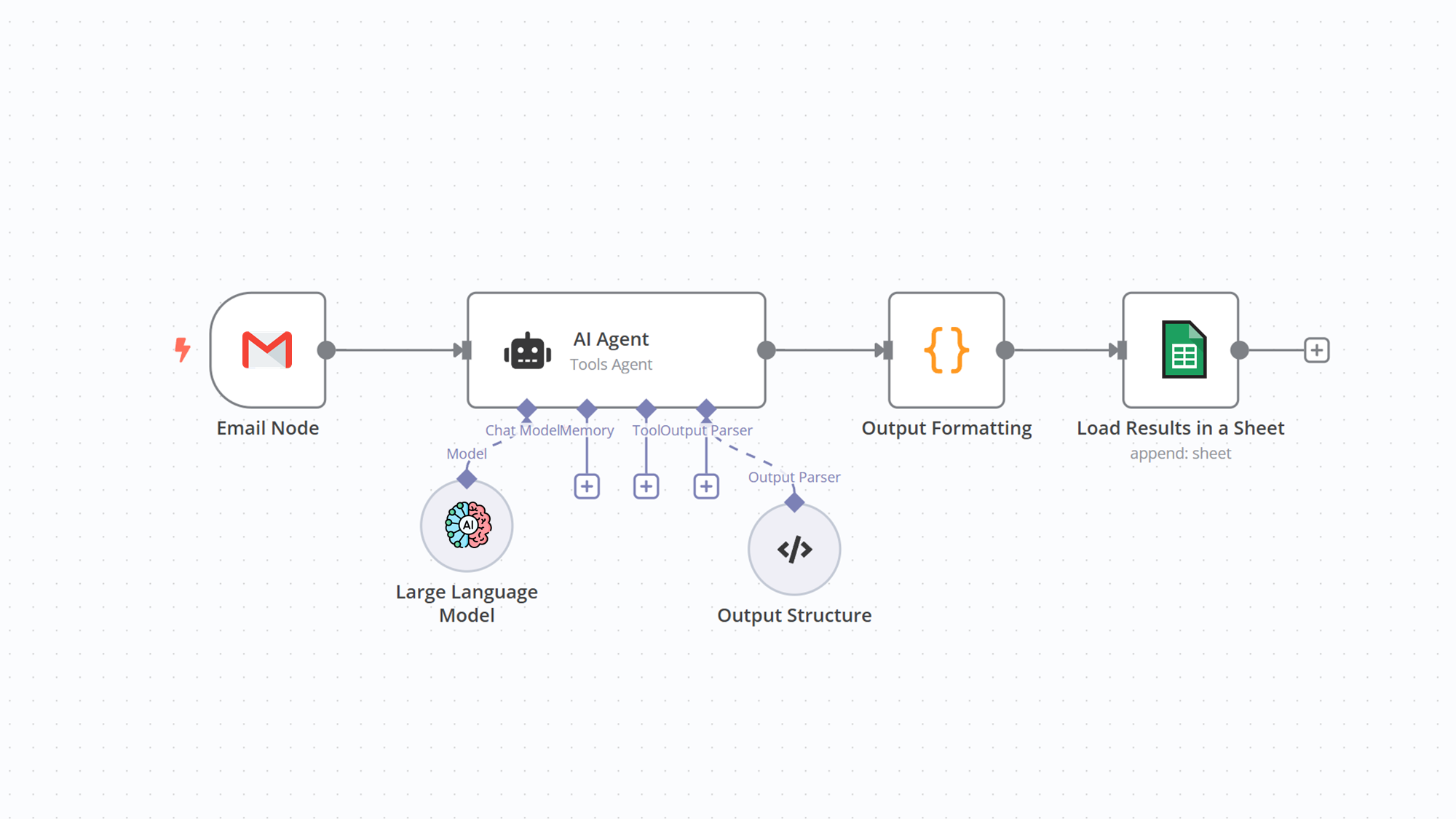Business Automation: Streamlining Operations with Cutting-Edge Technology
In today’s digital era, automation is no longer just a tool—it’s a cornerstone for businesses to stay competitive. For small and medium enterprises (SMEs), automation reduces manual tasks, accelerates processes, and boosts accuracy. Recent studies show automation can save 30-50% of daily work time while significantly cutting human errors. So, what is automation? How can businesses implement it effectively? And how do tools like n8n and Langflow contribute? Let’s dive into this comprehensive guide!

1. What is Automation?
1.1. Understanding Workflow and Automation

A workflow is a sequence of steps to complete a task within a business, often involving coordination between people, systems, and data across departments. For example, processing an order from receipt to delivery and payment tracking.
Manual workflows, however, often face issues like task overlap, data entry errors, or time-consuming follow-ups. This is where automation comes in: it leverages technology to execute these processes swiftly and accurately with minimal human intervention.
1.2. Automation in Modern Businesses
Automation goes beyond repetitive task handling—it integrates AI for smarter workflows. Key technologies include:
-
AI & Machine Learning: Learn from data to predict and optimize processes.
-
RPA (Robotic Process Automation): Automates software tasks like invoice processing.
-
API Integration: Connects apps for seamless data flow.
Common applications include auto-sending order confirmation emails, segmenting leads, or generating monthly financial reports.
2. Benefits of Automation for Businesses

Automation delivers tangible value, especially for SMEs with limited resources:
-
Boosts Productivity and Cuts Costs: Reduces delays between steps, saving 30-50% of work time and minimizing staffing needs for manual tasks.
-
Reduces Errors, Enhances Accuracy: Eliminates human errors like incorrect data entry or missed leads.
-
Improves Clarity and Transparency: Tracks task history, preventing responsibility shirking across teams.
-
Enhances Employee Satisfaction: Frees staff from mundane tasks, allowing focus on creative and strategic work.
-
Scales Seamlessly: Handles larger workloads as businesses grow.
Reports from platforms like n8n highlight that businesses using automation achieve higher ROI through AI-driven data processing.
3. 6 Steps to Implement Automation Effectively

To maximize automation’s benefits, businesses need a clear strategy to avoid disruptions. Here are six optimized steps with diverse, practical examples:
-
Identify Processes for Automation: Analyze repetitive, time-consuming, or error-prone tasks. Use flowcharts to map current workflows.
Example: Beyond capturing website leads into a CRM, automate internal expense approvals—systems can flag over-budget requests and notify managers instantly. -
Choose the Right Tools: Evaluate tools based on ease of use, integration capabilities, cost, and community support. Test free demos for compatibility.
Example: For businesses using multiple web apps, Zapier offers quick integrations; for AI-driven needs, n8n enables custom scripting. -
Build and Standardize Processes: Define each step clearly, eliminate redundancies using lean methodology, and create detailed SOPs with sample data to ensure consistency.
Example: For customer complaint handling, standardize by categorizing issues (e.g., defective product, late delivery) and integrate auto-response templates. -
Test and Refine: Run pilot tests on a small scale (1-2 departments), track KPIs like processing speed and error rates, and gather feedback via quick surveys.
Example: Test weekly report automation with Langflow—if AI misinterprets data, tweak prompts to boost accuracy from 80% to 95%. -
Roll Out and Train: Deploy gradually with online training (video guides) and hands-on workshops. Highlight personal benefits to reduce resistance to change.
Example: Train the marketing team to use Make for automating social media posts, with Q&A sessions to address API integration concerns. -
Monitor and Optimize: Use dashboards to track KPIs (processing speed, ROI) and schedule quarterly reviews. Expand by integrating new AI-driven data sources.
Example: After three months, analyze n8n data to identify email delivery bottlenecks, then add conditional logic for personalized content.
Following these steps can reduce implementation risks by under 20% and drive higher efficiency
4. Applications of Automation Across Business Functions

Automation is versatile, optimizing everything from sales to HR. Below are expanded applications with diverse examples tailored for SMEs:
-
Sales: Automates lead segmentation, follow-up emails, and quote generation. Tools like n8n connect CRMs to email systems for full-funnel automation.
Example: Automate loyalty programs—when customers hit spending thresholds, the system sends personalized discount codes via SMS, boosting conversions by 25%. -
Accounting: Generates invoices, sends payment reminders, and integrates with banks. Reduces bookkeeping errors by up to 90%.
Example: Automate bank reconciliation—RPA matches daily transactions with invoices, flagging discrepancies for accountants instantly. -
Marketing: Automates email campaigns, ad performance analysis, and social media posting. Langflow’s AI integration personalizes content.
Example: Automate A/B testing—systems test two email versions and select the best-performing one for mass distribution, optimizing ad spend. -
Project Management: Auto-assigns tasks, sends deadline reminders, and generates progress reports via Trello or Asana integrations.
Example: Automate project risk tracking—AI predicts delays and suggests resource reallocation, helping complete projects 15% faster. -
Recruitment: Uses AI to filter CVs, sends interview invites, and updates HR systems.
Example: Automate onboarding—sends e-contracts, sets up system accounts, and schedules initial training within one day.
These applications save time and enhance competitiveness, especially in fast-paced markets.
5. Top Automation Tools for Small Businesses
The 2025 market is buzzing with automation tools, from no-code to AI-native solutions. Here’s a curated list, spotlighting n8n and Langflow, alongside other popular options:
|
Tool |
Key Features |
Best For |
Pricing (2025) |
|
n8n |
Open-source, blends no-code and code (JS/Python), 400+ integrations, AI-native for agent workflows. Free self-hosting, ideal for custom needs. |
SMEs needing self-hosting, complex AI automation (e.g., multi-agent). |
Free (self-host); Cloud from $20/month. |
|
Langflow |
Low-code builder for AI agents and RAG apps, drag-and-drop, supports LLMs, vector DBs. Great for prototyping AI workflows. |
AI-focused businesses (e.g., chatbots, data analysis). |
Free (open-source); Enterprise from $50/month. |
|
Zapier |
Simple no-code, 7,000+ integrations, Zaps for basic workflows. User-friendly for non-tech users. |
Beginners, quick app integrations. |
Free (limited); From $20/month. |
|
Make (Integromat) |
Visual builder for complex workflows, conditional logic, robust APIs. |
Businesses needing branching, multi-step flows. |
From $9/month. |
|
Microsoft Power Automate |
Deep Microsoft 365 integration, RPA for manual tasks. |
Businesses in the Microsoft ecosystem. |
From $15/user/month. |
-
n8n: Perfect for SMEs prioritizing data control (self-hosted), building AI agents for tasks like customer support via Slack/Teams. Rated 4.9/5 on G2 with a 200k+ member community.
-
Langflow: AI-centric, enables rapid agent creation with a visual editor. Supports NVIDIA RTX for local AI, ideal for privacy-conscious businesses. Boasts 50k+ GitHub stars.
Choose based on needs: no-code for speed (Zapier) or AI-heavy for intelligence (Langflow/n8n).
Conclusion
Automation is the key to transforming businesses in 2025, from streamlining operations to gaining a competitive edge. With these refined six steps and diverse applications, you can start small and scale smartly. Try free versions of n8n or Langflow to experience the difference—saving time means saving money!
Have you tried automation yet? Share your experiences in the comments below. Like and share if you found this post helpful!




